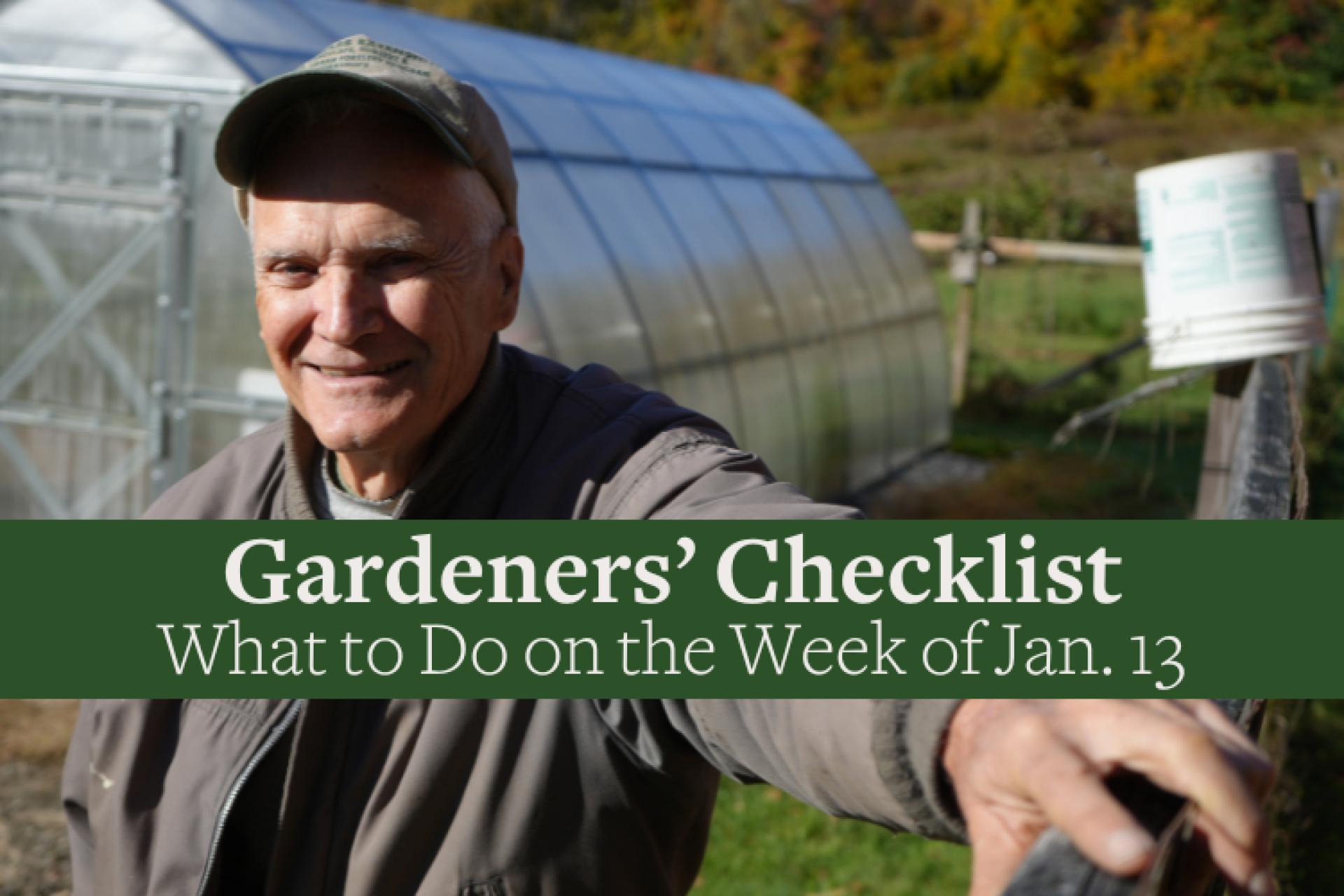You are here
Gardeners Checklist: Here Is What to Do on the Week of Jan. 13
Gardeners Checklist: Here Is What to Do on the Week of Jan. 13
By Ron Kujawski
* Check out stored bulbs, rhizomes, roots, corms, etc. of Canna, dahlia, gladiolus, and other summer flowering “bulbs” and cull any that are rotting or have shriveled beyond recognition.
* Check stored potatoes, onions, and apples for signs of decay. The old saying that “one bad apple spoils the bunch” is very true. Cull the bad ones.
* Don’t be disturbed if plants obtained over the holiday season have dropped some of their leaves, especially lower leaves. The plants are just trying to let us know they prefer the warm, sunny, humid greenhouses where they previously grew, as opposed to the inhospitable (dry, cool, dimly lighted) environment of our homes. Tell the plants to “suck it up!” In time, they’ll adjust to their new environs and will produce new leaves.
* Get your tiller, mower, and other power equipment to your local serviceman for repairs. Business is usually slow now, unlike the manic state of affairs in spring.
*
It’s probably not something that someone who writes a gardening column should admit to but I have been known to accidentally kill a plant or two or three or…. oh well, who’s counting? As an example of my crimes of phytocide, I once sprayed mite-infested, potted thyme with insecticidal soap and left the plant next to the sunniest window in our house. It only took a day or two for the thyme to exhale its last molecule of oxygen. That was a classic example of phytotoxicity (keep that word in mind the next time you play Scrabble). Phytotoxicity is the injury caused to a plant from exposure to a chemical.
Common symptoms of phytotoxic injury may occur as brown or yellow spots on plant leaves, browning along leaf edges, distortion of new growth, or death of the entire plant. Some of these symptoms are the same for certain plant diseases. The big difference is that chemically caused symptoms typically appear quickly, usually within a day or two, though distortion of new growth is not apparent until new leaves or shoots are developing. In contrast, biological diseases of plants often develop slowly over weeks or months.
Phytotoxicity can occur as a result of applying pesticide to a sensitive plant, applying the pesticide at the wrong rate, or applying pesticide to a plant under environmental conditions that increase its sensitivity to the chemical — such was the case with my thyme and insecticidal soap event. The best way to avoid problems with phytotoxicity is to read and follow the label instructions on the product being applied. However, in some cases, label instructions can be too general and may not include names of specific plants. If in doubt, test your plant’s sensitivity to the chemical by applying it to a single leaf or a small side shoot and watch for any symptoms of phytotoxicity. If you should happen to kill the plant, you might qualify to be a garden writer.
Ron Kujawski began gardening at an early age on his family's onion farm in upstate New York. Although now retired, he spent most of his career teaching at the UMass Extension Service. He serves on Berkshire Botanical Garden’s Horticulture Advisory Committee. His book, Week-by-Week Vegetable Gardener’s Handbook, is available here.
Help Our Garden Grow!
Your donation helps us to educate and inspire visitors of all ages on the art and science of gardening and the preservation of our environment.
All donations are 100 percent tax deductible.


